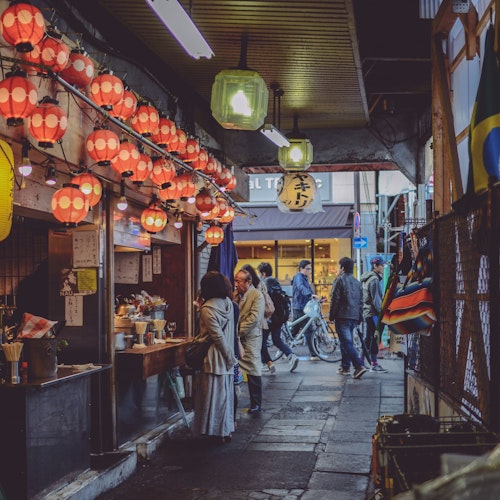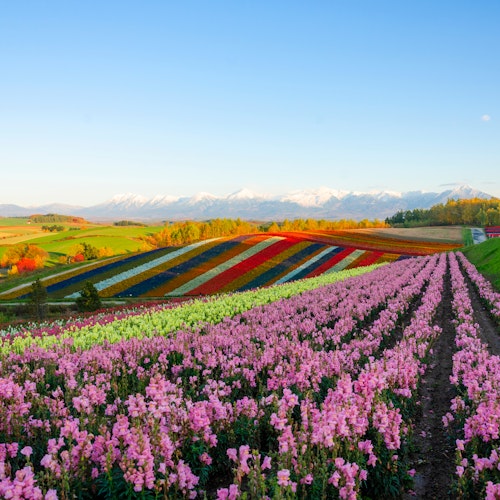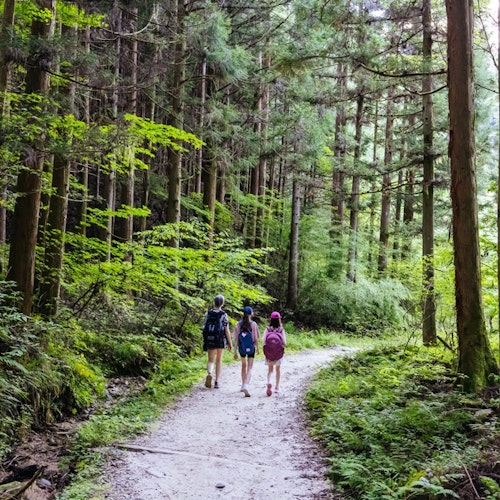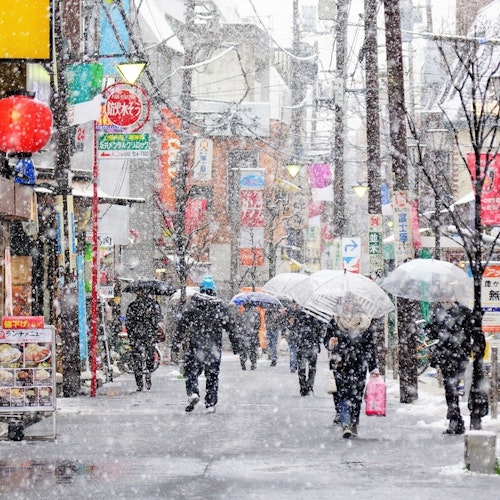
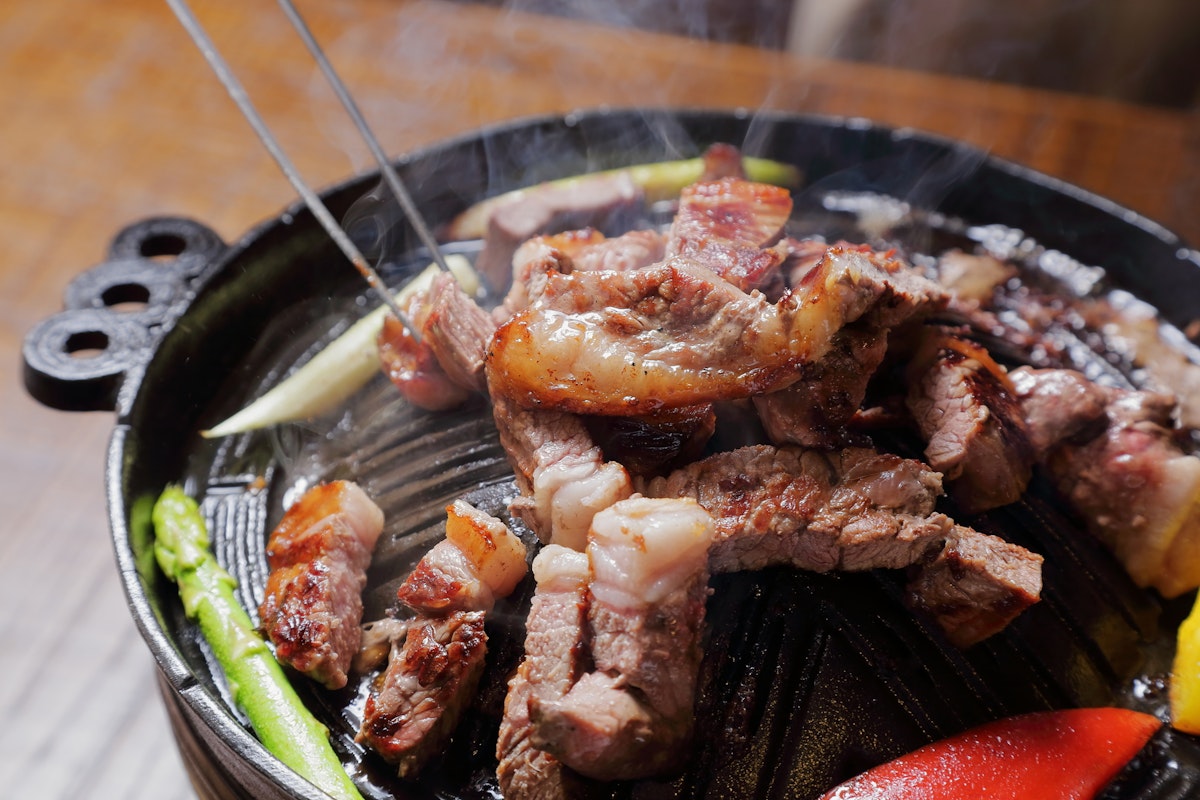
Hokkaido, Japan's northernmost island, is a paradise for food lovers. The cold climate, rich farmlands, and surrounding seas create perfect conditions for some of Japan's finest cuisine. From steaming bowls of ramen to the freshest seafood, Hokkaido food offers unforgettable flavors that you won't find anywhere else.
Let's explore the must-try dishes that make this region a top destination for culinary adventures.
Sapporo miso ramen is the signature dish that put Hokkaido on the culinary map. This hearty noodle soup was born in Sapporo during the 1960s and quickly became a national favorite. The rich, savory miso-based broth is made with a special blend of fermented soybean paste that creates a deep, complex flavor.
What makes Sapporo miso ramen special is the thick, chewy noodles that hold up perfectly against the robust broth. The bowl comes topped with butter, sweet corn, bean sprouts, ground pork, and a soft-boiled egg. The butter melts into the hot soup, adding a creamy richness that's uniquely Hokkaido.
The best time to eat this dish is during the cold winter months when temperatures drop below freezing. Locals say the butter was originally added to keep the ramen hot longer in Sapporo's harsh winters. You'll find ramen shops on almost every corner in Sapporo, with Ramen Yokocho (Ramen Alley) being the most famous spot to try authentic versions.
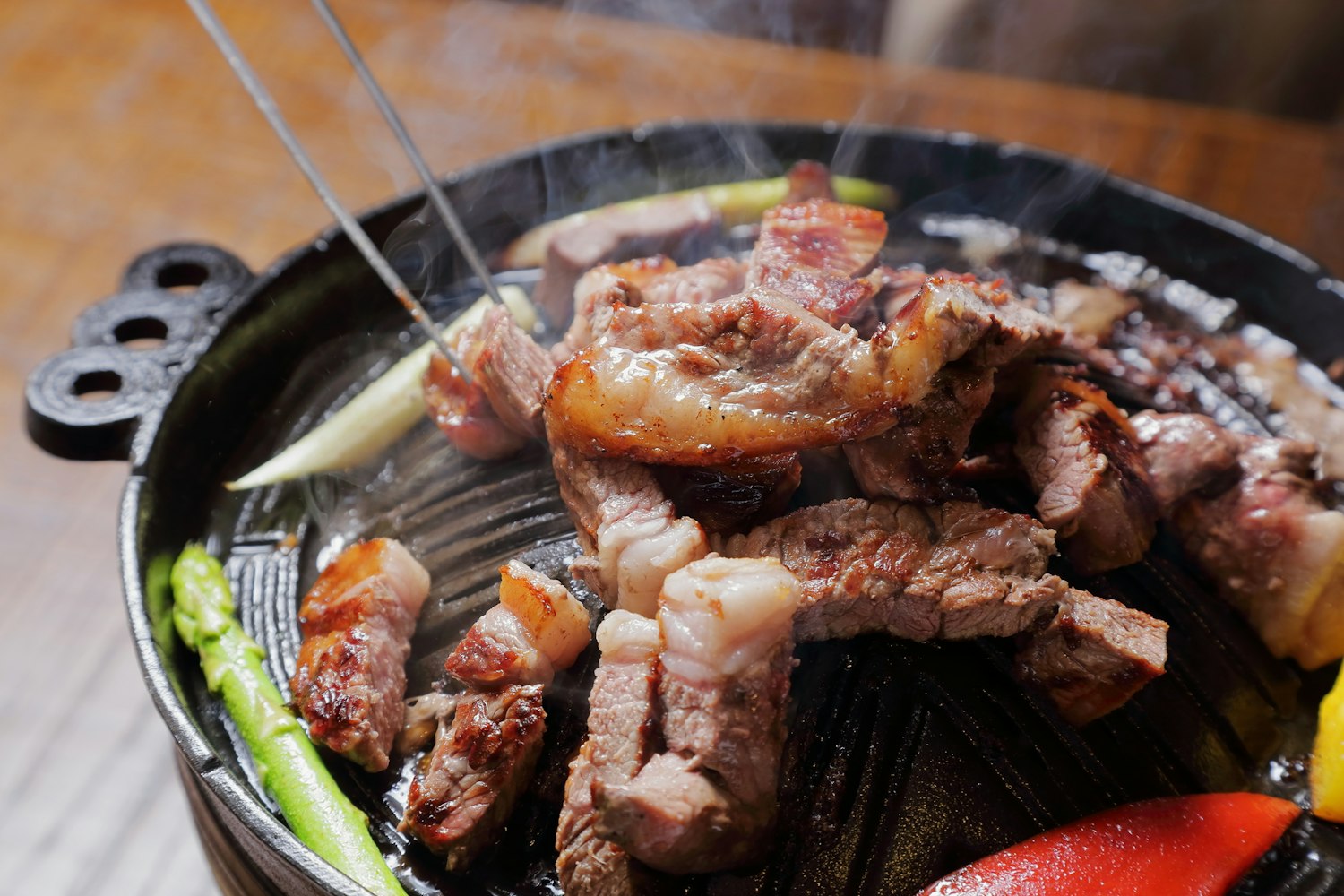
Jingisukan, named after Genghis Khan, is Hokkaido's beloved grilled lamb dish. This unique barbecue style uses a special dome-shaped grill that was supposedly inspired by Mongolian helmets. The lamb is cooked on top of the dome while vegetables simmer in the flavorful juices that drip down the sides.
Hokkaido raises some of Japan's finest lamb, making this the perfect place to try this meat. The lamb is marinated in a sweet and savory sauce made with soy sauce, sake, ginger, and apples. Fresh lamb tastes milder and more tender than mutton, with no gamey flavor that some people worry about.
The dish comes with plenty of vegetables including onions, cabbage, bean sprouts, and bell peppers. These soak up the delicious lamb drippings as they cook. Locals enjoy Jingisukan with cold beer, making it a popular choice for gatherings and celebrations. Many restaurants offer all-you-can-eat Jingisukan, which is perfect for first-timers who want to try different cuts and marinades.
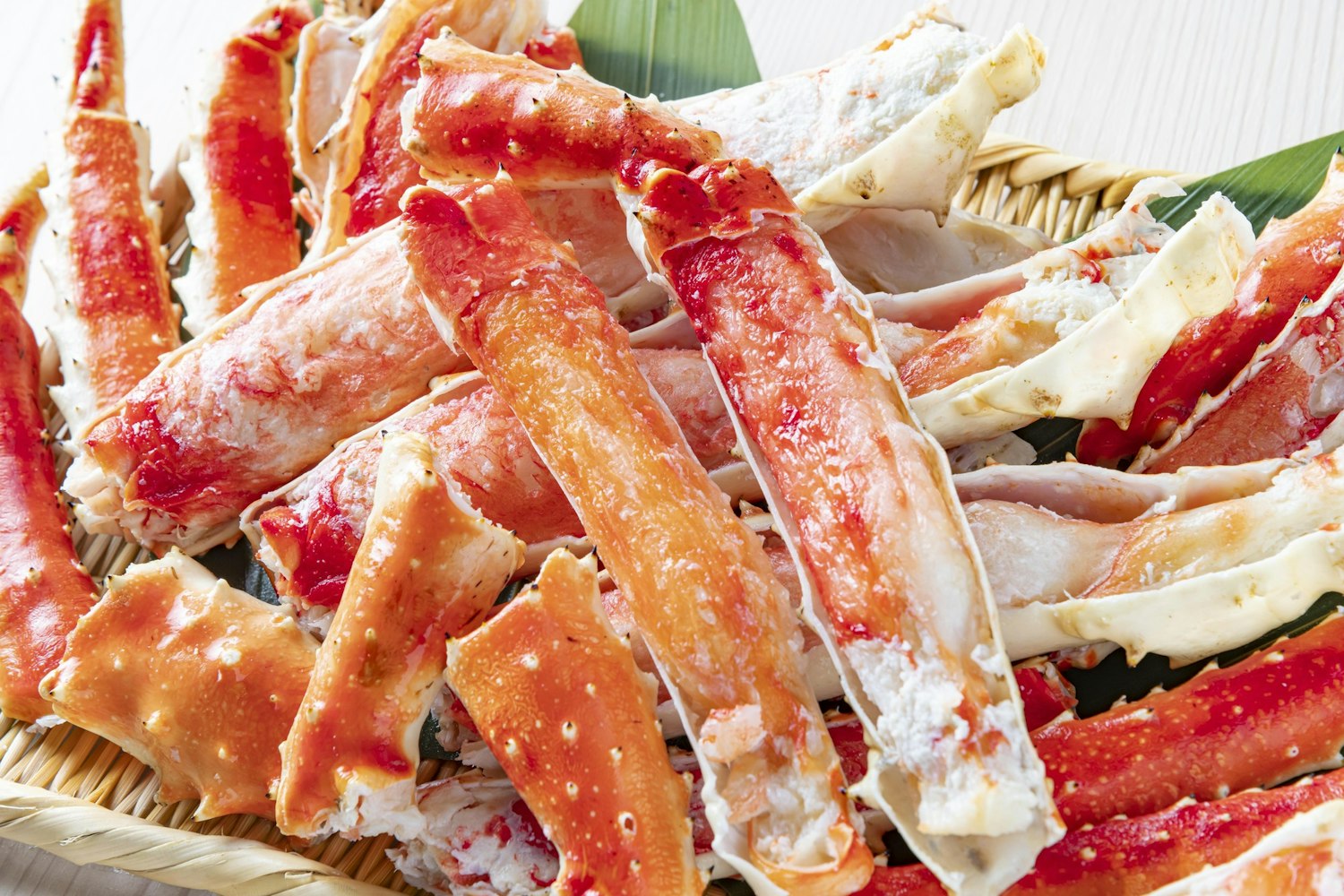
Hokkaido's cold ocean waters produce some of the world's finest king crab. Three types dominate the local markets including red king crab, blue king crab, and the prized hairy crab (kegani). These massive crustaceans can weigh up to 10 kilograms and have incredibly sweet, tender meat.
The best season for king crab runs from November to March when the meat is at its sweetest and most succulent. You can enjoy king crab in many ways including steamed, grilled, boiled, or as sashimi. The most popular preparation is simply boiled or steamed with minimal seasoning to let the natural sweetness shine through.
Hakodate Morning Market and Sapporo's Nijo Market are the best places to find fresh king crab. Many restaurants let you choose your live crab from tanks and cook it right away. A full king crab meal can be expensive, with prices ranging from 5,000 to 20,000 yen depending on size and type, but the incredible flavor makes it worth the splurge.
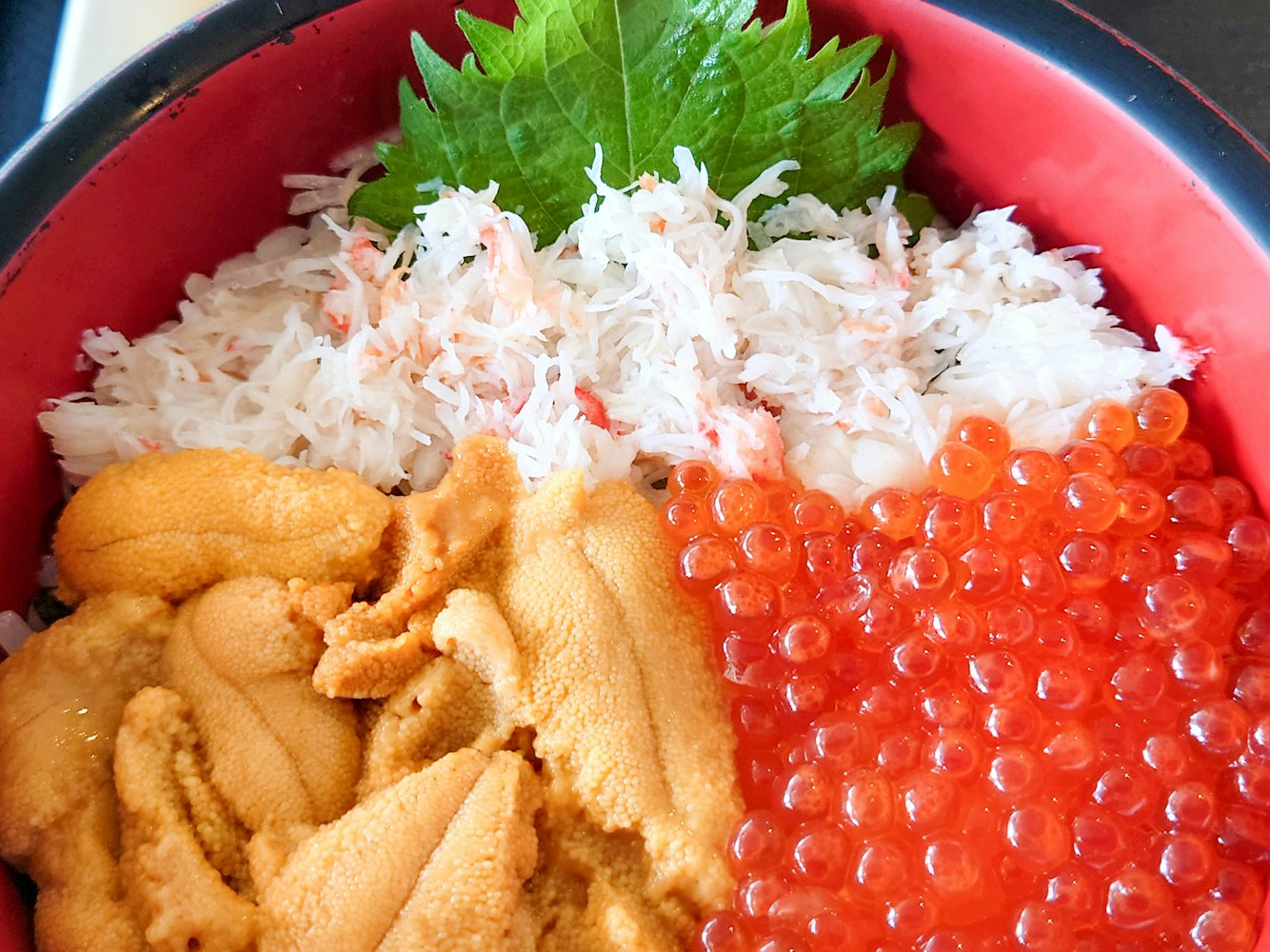
Kaisendon is the ultimate seafood rice bowl that showcases Hokkaido's incredible ocean bounty. This dish features a large bowl of warm rice topped with an generous assortment of fresh raw fish and seafood. Think of it as deconstructed sushi served in a bowl.
A typical kaisendon includes thick slices of salmon, tuna, scallops, sea urchin (uni), salmon roe (ikura), octopus, and sweet shrimp. The fish is incredibly fresh, often caught the same morning it's served. Hokkaido's cold waters produce fish with firmer texture and richer flavor compared to warmer regions.
The best places to eat kaisendon are at morning markets near fishing ports. Hakodate Morning Market and Otaru's Sankaku Market are famous for their kaisendon stalls where you can watch vendors prepare your bowl with fish pulled straight from market tanks. Prices range from 1,500 to 4,000 yen depending on the types and amount of seafood included. Some shops even offer "make your own" kaisendon where you select each topping yourself.
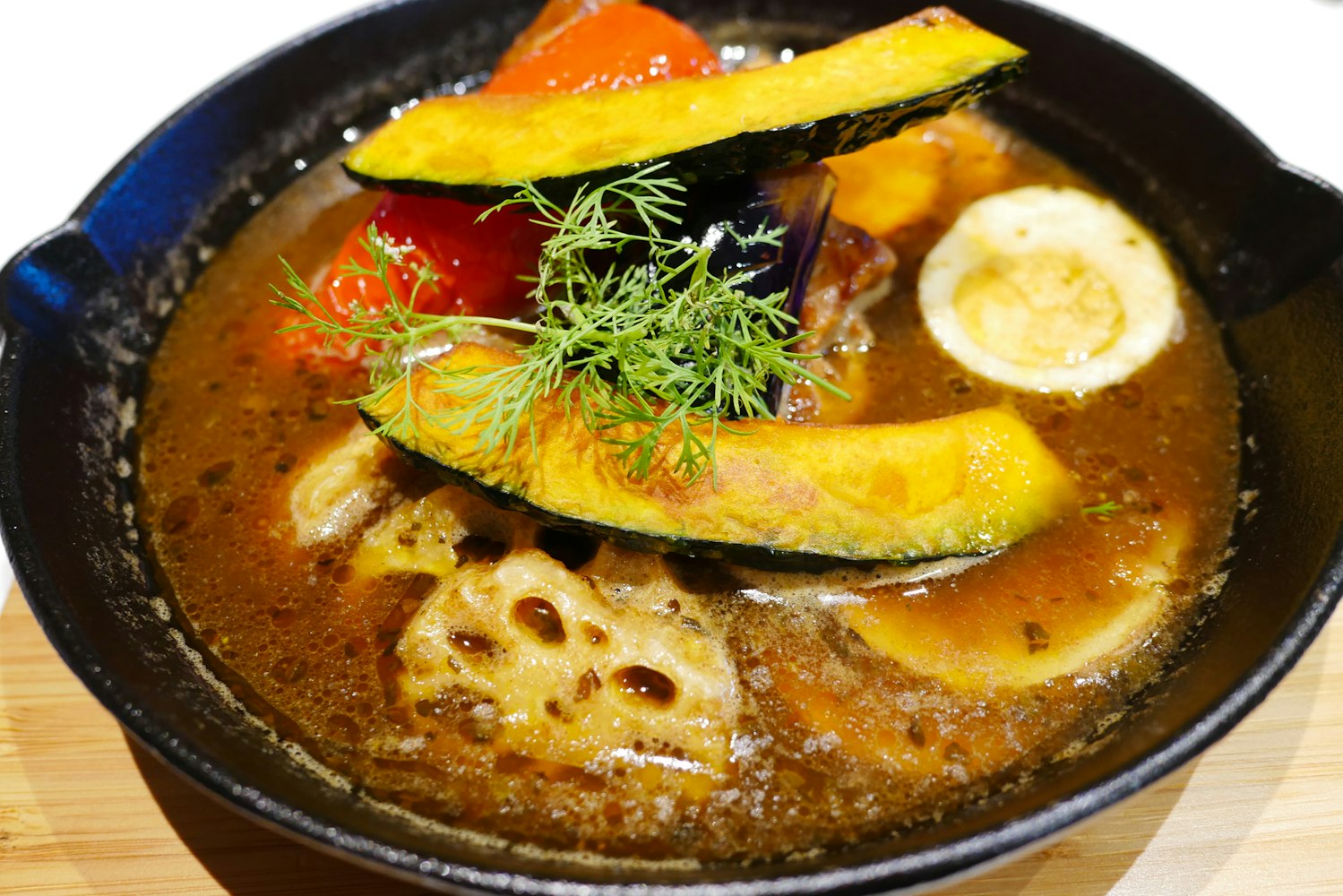
Hokkaido curry stands apart from other Japanese curries with its rich, thick consistency and generous use of local ingredients. This comfort food combines traditional Japanese curry with Hokkaido's premium produce and dairy products. The result is a heartier, more luxurious version than you'll find elsewhere in Japan.
The curry sauce is made extra smooth and creamy by adding Hokkaido butter and milk. Local vegetables like potatoes, carrots, and onions from Hokkaido farms are naturally sweeter and more flavorful due to the climate. Many versions include chunks of tender beef or pork raised on the island.
Soup curry is a thinner, spicier Hokkaido variation that emerged in Sapporo during the 1970s. Unlike thick curry served over rice, soup curry features large pieces of vegetables and meat in a fragrant, brothy curry soup. Each restaurant creates unique spice blends, and diners can usually choose their preferred spice level from 0 to 50 or even higher for extreme heat lovers.
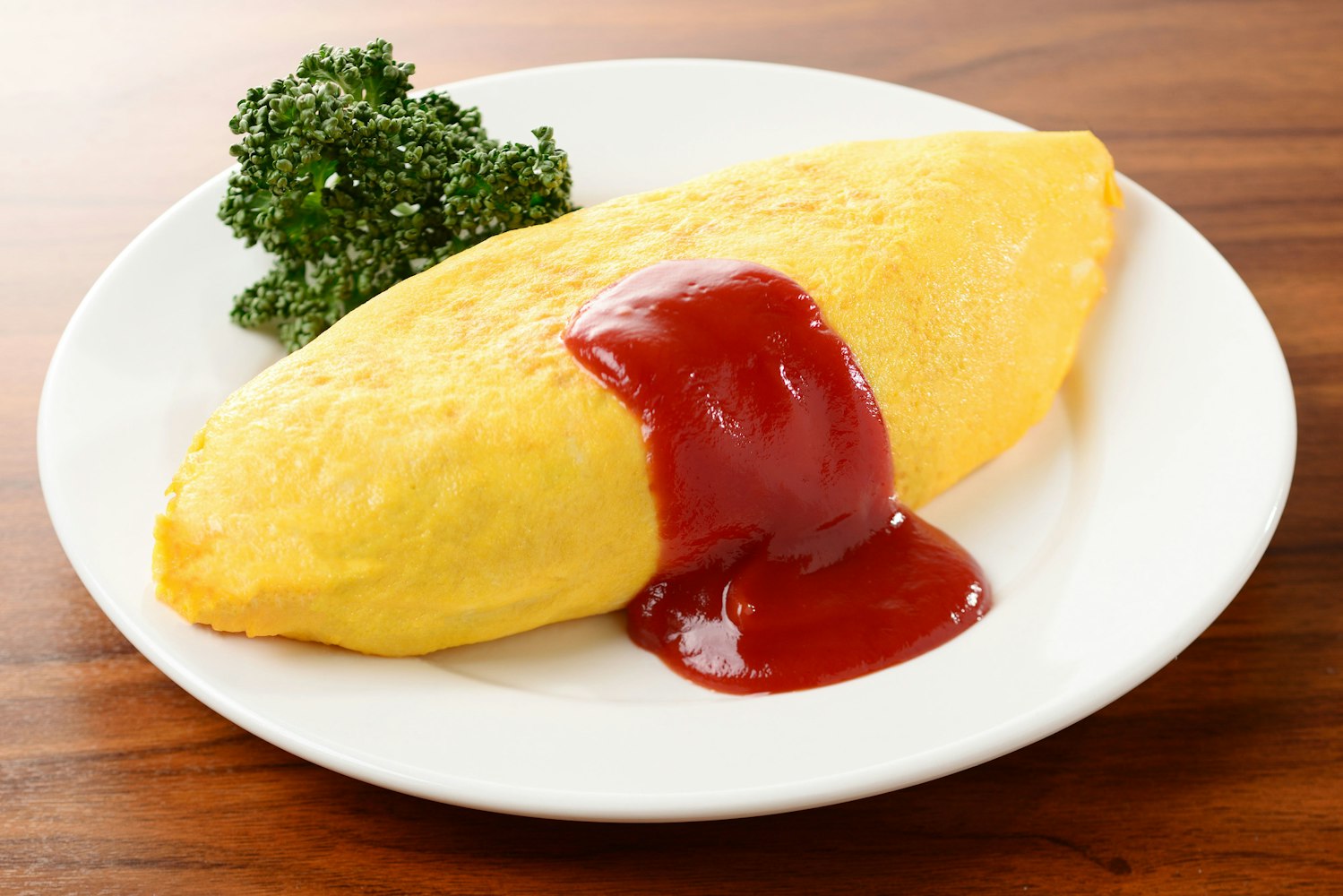
Omurice is a beloved dish that combines Western and Japanese cooking styles into pure comfort food. The name comes from "omelette" and "rice," which perfectly describes this simple yet satisfying meal. While not originally from Hokkaido, the island's version stands out thanks to incredibly fresh eggs from local farms.
The dish starts with fried rice mixed with ketchup and usually chicken, onions, and vegetables. This seasoned rice gets wrapped in a thin, fluffy omelette made from eggs beaten until silky smooth. The top is often decorated with more ketchup in pretty patterns or demi-glace sauce for a fancier version.
Hokkaido's chickens produce eggs with bright orange yolks and rich flavor due to the quality feed and farming conditions. The omelette should be creamy and slightly runny in the center, so when you cut into it, the egg gently flows over the rice below. Coffee shops and yoshoku (Western-style Japanese) restaurants throughout Hokkaido serve excellent omurice, making it perfect for a satisfying lunch.
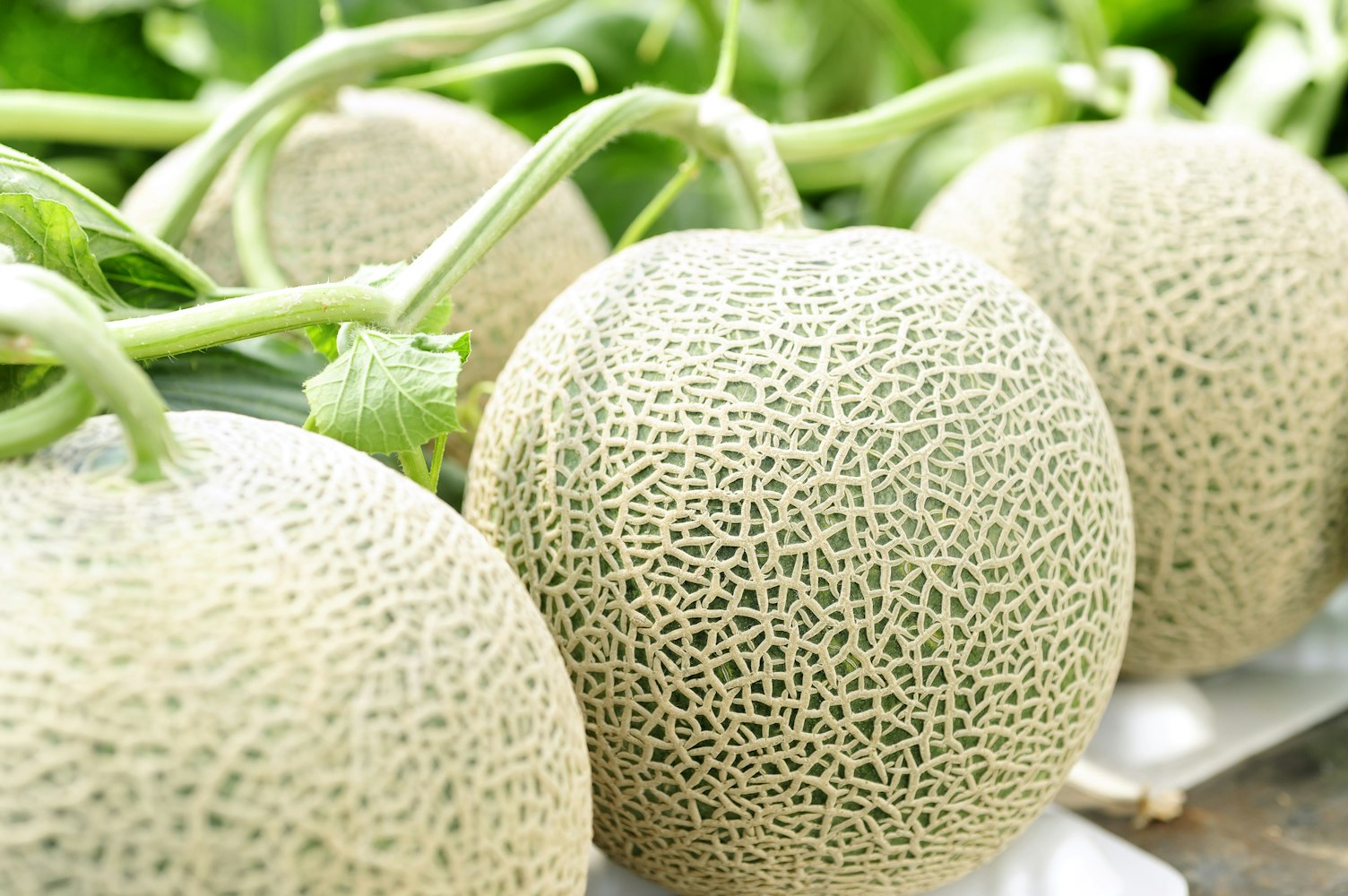
Hokkaido's king melon, particularly the Yubari King variety, represents the pinnacle of Japanese luxury fruit culture. These perfectly round, netted melons are grown with incredible care in greenhouses around Yubari City. Each melon receives individual attention, with farmers limiting vines to grow just one or two fruits so all nutrients go into creating the perfect melon.
The flesh is bright orange, incredibly juicy, and so sweet it tastes like candy. The texture is soft and melts in your mouth with each bite. At peak ripeness, a Yubari King melon can contain up to 18% sugar content, making it one of the sweetest fruits in the world.
The melon season runs from May to September, with peak harvest in June and July. Premium melons at auction have sold for over 5 million yen for a pair, though regular ones cost between 10,000 to 30,000 yen each. Many visitors enjoy melon soft serve, melon bread, or slices at fruit parlors throughout Hokkaido, which offers a more affordable way to taste this legendary fruit.
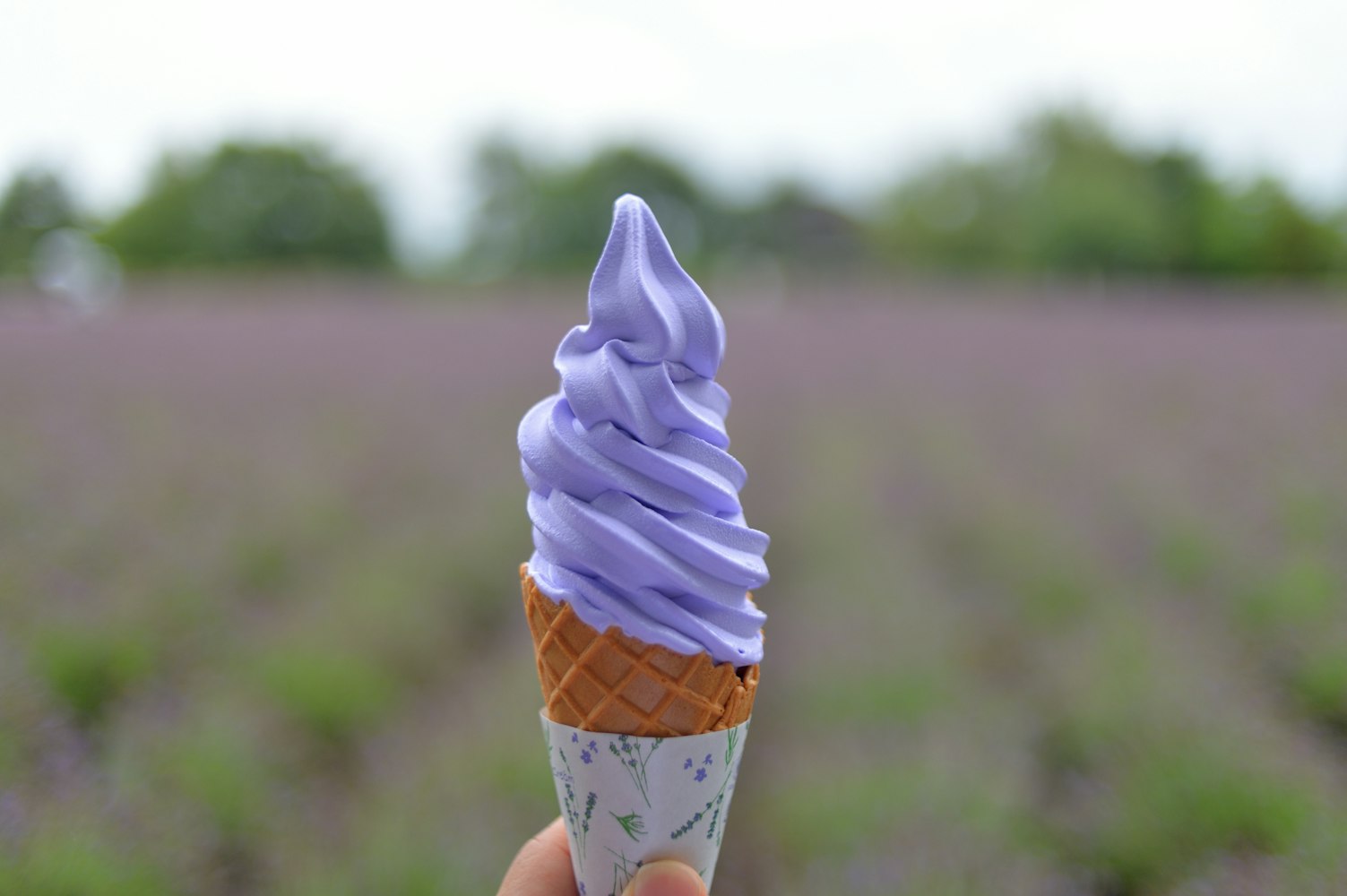
Hokkaido's dairy farms produce some of Japan's creamiest, richest milk, making the island famous for exceptional soft serve ice cream. You'll find soft serve shops everywhere, from highway rest stops to tourist attractions, each competing to create the smoothest, most flavorful ice cream.
Lavender flavor is the signature variety that captures the essence of Hokkaido summers. The island of Furano is famous for its purple lavender fields that bloom from late June to early August. Local producers infuse fresh lavender into milk and cream, creating a unique flavor that's floral, slightly sweet, and incredibly refreshing.
The lavender soft serve has a beautiful light purple color and a delicate taste that's not too strong or perfume-like. It pairs perfectly with the rich, creamy base made from Hokkaido milk with high butterfat content. Other popular flavors include melon, corn, squid ink, and plain milk, but lavender remains the most iconic Hokkaido choice.
Many farms offer soft serve made from milk collected that same day, which creates an incredibly fresh taste. Prices are reasonable at around 300 to 500 yen per cone, making it an affordable treat to enjoy while exploring Hokkaido's countryside and attractions.
Hokkaido's food is a feast for the senses, celebrating fresh ingredients, culinary traditions, and innovation. From the creamy richness of Hokkaido butter to the briny freshness of sea urchin, the region's dishes capture the essence of Japanese cuisine.
Whether sampling soup curry, indulging in sushi, or enjoying a steaming bowl of miso ramen, every bite tells a story of Hokkaido's rich culinary heritage. If you have yet to visit Hokkaido, let its vibrant food scene be the reason you pack your bags and embark on an unforgettable journey.
